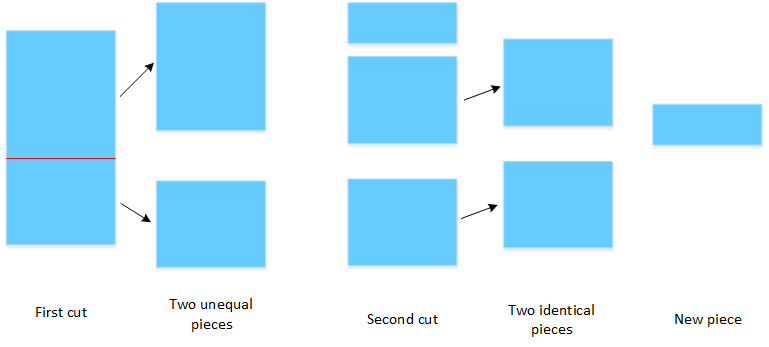Christmas day and family tiffs. They belong together like baubles and spruces, or crackers and bad jokes. The remote control, the washing-up bowl, the PlayStation console – the trigger points for an intergenerational meltdown are as plentiful as raisins in a Christmas cake.
Talking of cake. Can this at least be a source of goodwill over the festive season, or are we destined to be divided into camps here too: the gluttons who swipe the fattest slices pitted against the martyrs who are left with the (marzipan-free) crumbs?
The University of Bath brings good tidings on this front. Mathematician Professor Chris Budd OBE is keen to spread the word that the cherished Christmas cake can be cut into perfectly equal pieces, bringing hope that harmony can spread in households across the land.
Traditionally, the “you cut, I choose” algorithm has been seen as the fairest method of slicing a cake if you have two people. The way this works is that one person slices the cake as fairly as they can, and the second person gets first dibs. The reasoning behind this technique is that it’s clearly in the interests of the first person to cut the cake as fairly as possible, so that no matter how the second person chooses, the remaining piece will be as close as possible to half of the original. Though this may sound fair, Professor Budd points out that it gives overwhelming advantage to the person who has the first choice.
“Suppose that the cake cutter is blind,” said Professor Budd. “Despite their best efforts to cut the cake fairly, it is very unlikely the slices they cut will be equal. The chooser will then take the largest piece.
“This situation will always arise if the ability of the chooser to decide which piece is larger, is greater than the ability of the cutter to divide the cake into two equal pieces.”
The only fair way to cut Christmas cake
This is how we can do better: The first person makes a cut across the cake. There are now two portions of cake. Assuming the cutter is not an expert, one piece will be smaller than the other. By placing the two slices side-by-side, the smaller one will be easy to spot. Keeping them together, it will be simple to trim the larger slice so the two match in size. This leaves two pieces that are exactly the same size, plus a new small piece. Each person then takes one of the two identical slices of cake. Now they have a much smaller slice of cake to divide. By repeating the process on the new piece, they will be left with two (much smaller) identical pieces plus an even smaller trimmed piece.
“Then all they have to do is keep repeating this process until only crumbs are left – bingo!”
This slicing technique can easily be extended if there are more than two people wanting to eat the cake, as is usually the case, said Professor Budd, who specialises in bringing creative mathematical solutions to problems arising in industry (and dessert-loving households).
 How to cut your Christmas cake fairly
How to cut your Christmas cake fairly
The maths of Christmas
Christmas cake is just one of the topics that feature in Professor Budd’s seasonal talk, A Mathematical Christmas Stocking, delivered this week to a large online audience in an event organised by the International Centre for the Mathematical Sciences (ICMS) in Edinburgh. And apparently there is more to good cake etiquette than fair slicing.
“This year, I’m particularly concerned about the way people dry out their cake by exposing the soft interior to the drying air,” he said, “This too comes down to poor cutting technique.”
The ordinary way of attacking a Christmas cake is to cut out a wedge and then divide this into smaller chunks, but this method is clearly flawed, as the remaining cake is left open to the elements.
A far better technique – first proposed in 1906 by polymath Sir Francis Galton in the highly respected journal Nature and now promoted in Professor Budd’s Christmas talk – involves removing a long, narrow wedge of cake from near the middle of the cake by making two straight cuts across the cake, close to (and equidistant from) the centre. Once this rectangular wedge has been removed, it can be cut into smaller rectangles and shared around. The two remaining segments of cake can then be pressed together and sealed with an elastic band around the perimeter. With no exposed surfaces, the cake can then be stored exactly as it is.
The next time cake is called for, a similar (but smaller) wedge can be removed by slicing the cake in two places at a right angle to the first two cuts. Again, the two remaining segments can be pressed together, maintaining the round-ish shape of the original cake, thereby sealing it.
“And so the slicing should continue, with about one-third of the cake being removed on each occasion until you are left with crumbs,” said Professor Budd.
He added: “Of course, you’ll be back to the problem we started with of cutting each wedge into even slices to keep it fair, but at least you won’t find yourself munching through dried-out cake two months after Christmas.”

How to cut your cake to keep it moist

